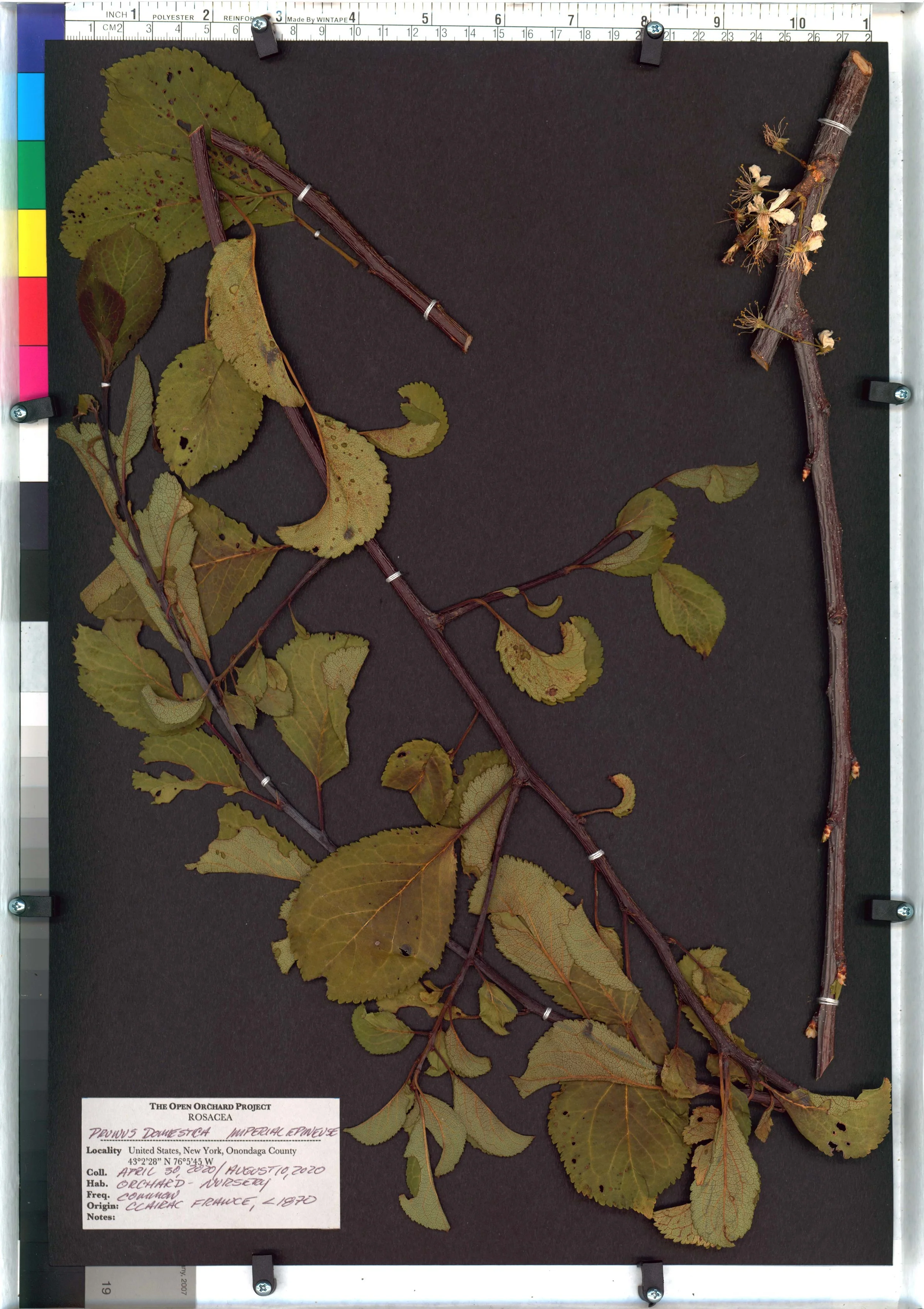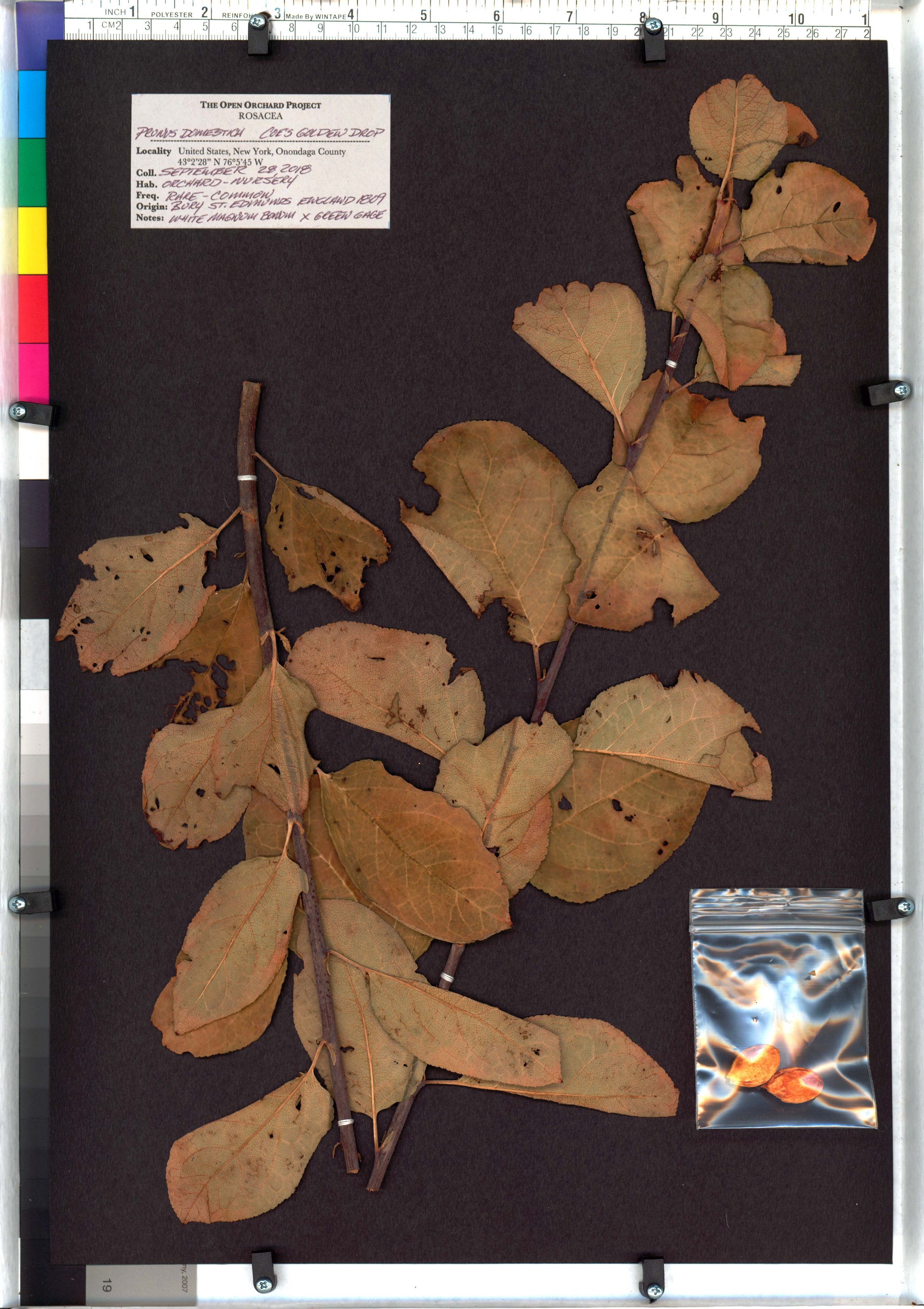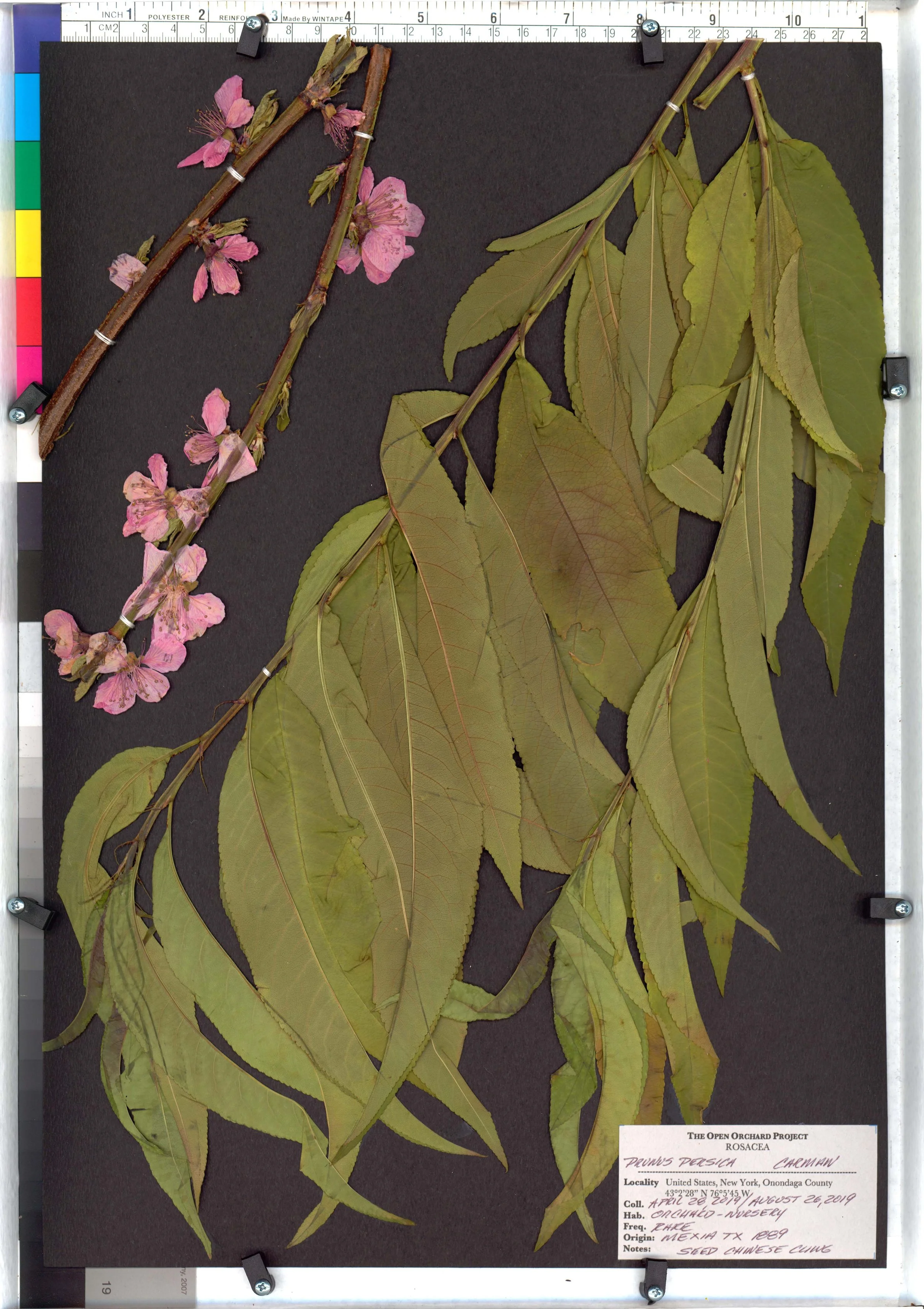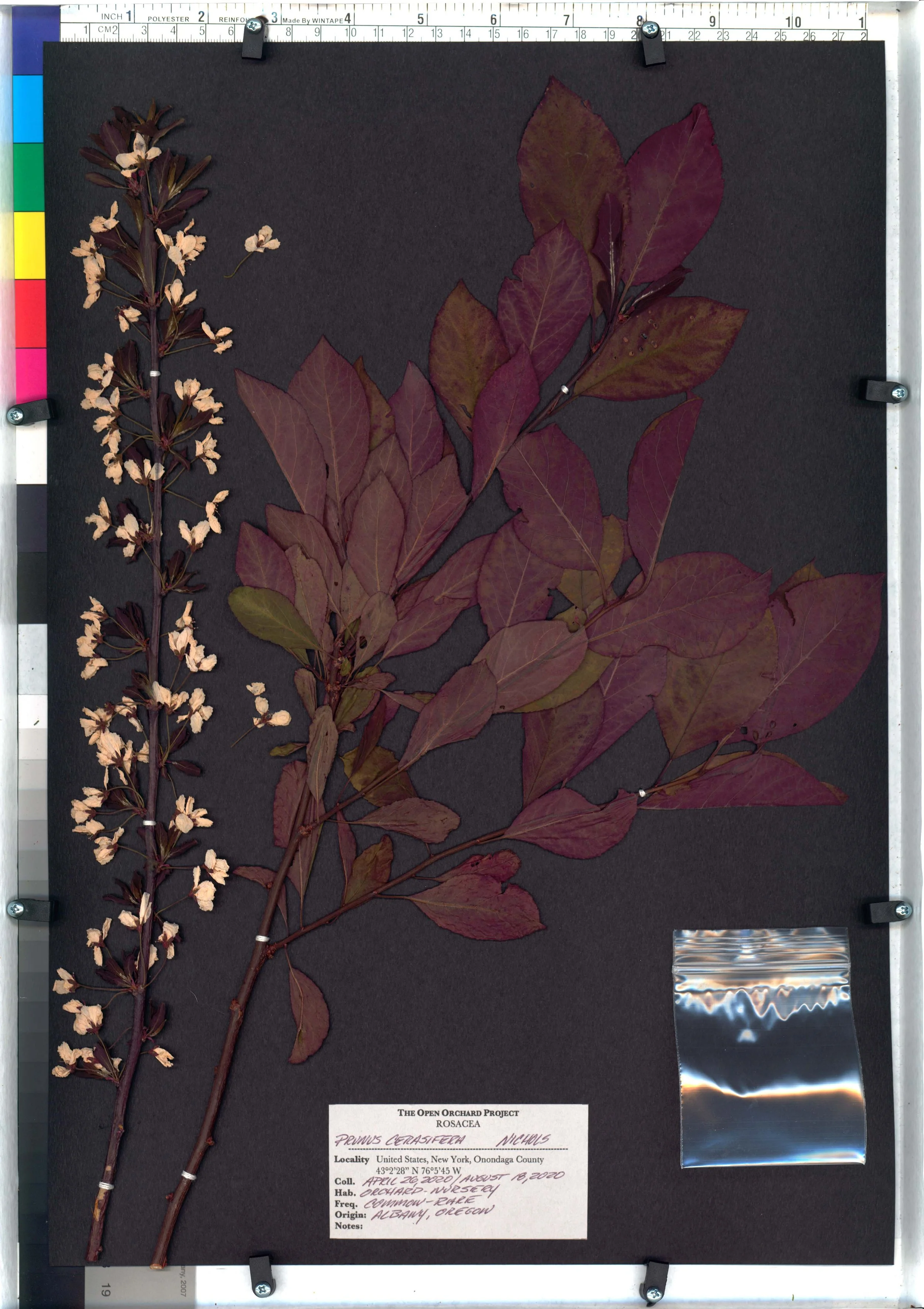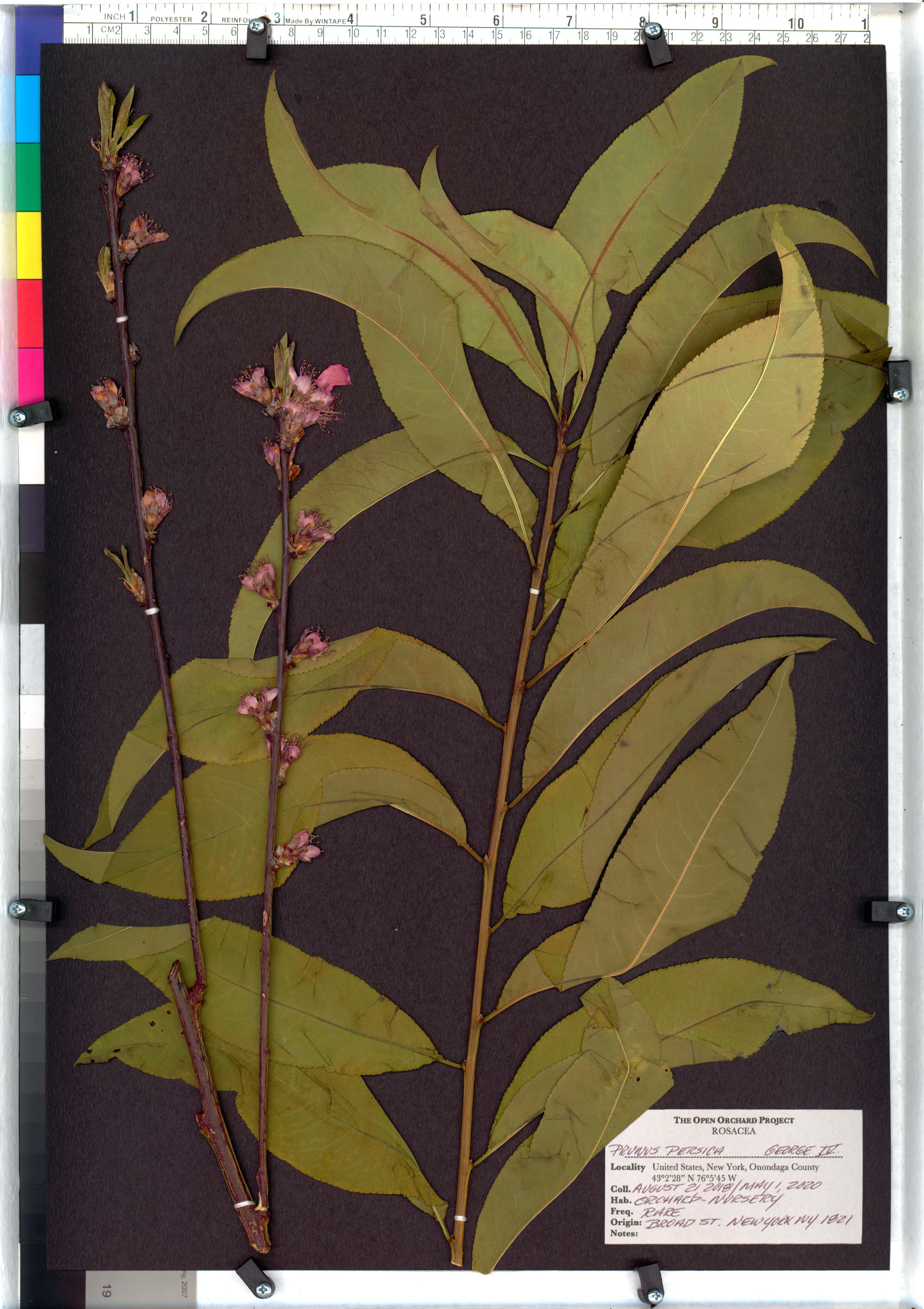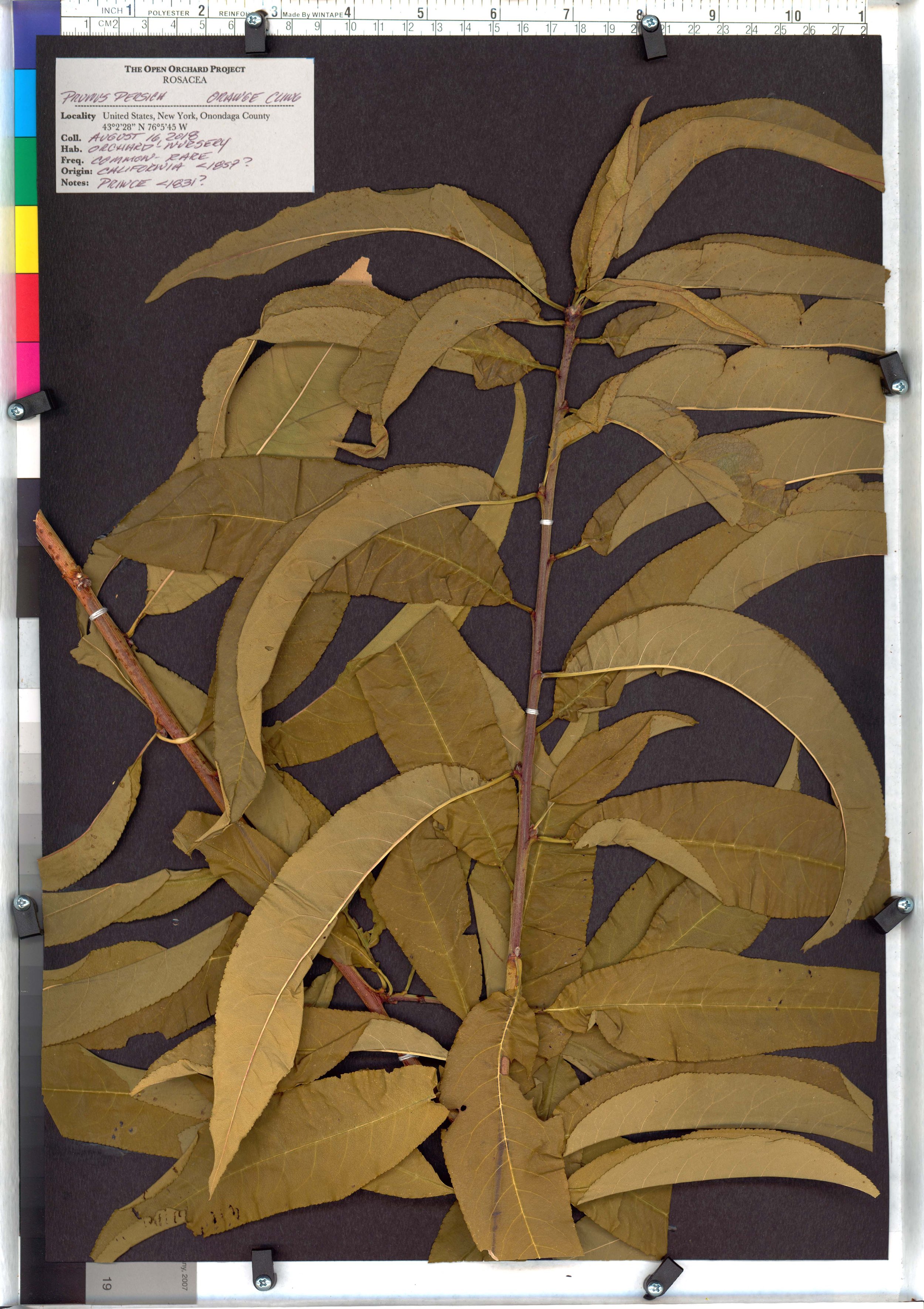
Herbarium Specimens
Herbarium Specimens
In the past hundred years, there has been a dramatic decline in the number of fruit varieties available to the public. Due to numerous factors including industrialization, disease, and the rise of monocultures; thousands upon thousands of different varieties of fruit varieties have gone extinct or are no longer available, leaving only a few dozen cultivars of each fruit type. These heirloom and antique varieties of peaches, plums, apricots, nectarines, and cherries continue to vanish at a frightening rate, and with them their genetic material, and in many ways our history. The Herbarium Specimens attempt to preserve these rare heirloom fruit before they disappear.
The Herbarium Specimens combine pressed plant samples, branches, leaves, and flowers to present them in dried form, mounted on paper. A more elaborate form of a pressed flower they archivally preserve precise species of plants, recording their taxonomy and exact date and place of collection to preserve for later scientific study. The process for creating herbarium specimens is quite simple and involves collecting entire plants or representative parts of a plant, placing them between sheets of newsprint known as “flimsies” themselves placed within sheets of blotting paper, and adding pressure to wick the moisture within the plant. After weeks of drying, specimens are mounted on a card stock and labeled with relevant data. Done properly, specimens can be held indefinitely with some of the oldest extant dating back five hundred years. Used to study taxonomy, distribution within a region, and original types before mutation and evolution, they serve the very important need of preserving the DNA of the plant. Herbarium Specimens have also been used extensively for creating botanical illustrations and as art in and of themself.








































